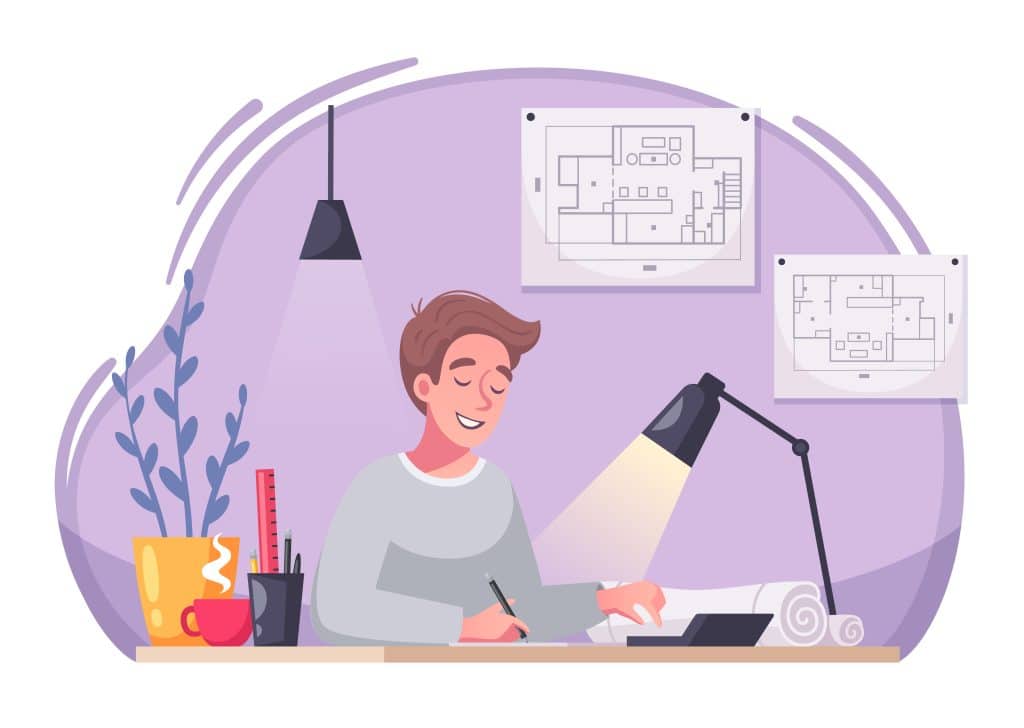The role of private drafting in strengthening conceptual understanding has never been more crucial. With new methods and tools gaining popularity, this form of drafting is helping professionals achieve more robust and clearer conceptual frameworks than ever before. Here’s why you should care.

The Rise of Private Drafting in Conceptual Development
Creative professionals across multiple industries are now using private drafting to improve the clarity and strength of their ideas, a practice once primarily reserved for architects, designers, and strategists. In essence, private drafting is the practice of refining concepts, ideas, and thoughts in isolation, before presenting them to a broader audience. This process enables individuals to perfect their ideas, ensuring they form and define the concept clearly before incorporating any external input.
This method is effective because it removes the distractions of external influences and the pressure of immediate feedback. Instead, it fosters a deep and thorough examination of one’s ideas, ensuring that the final product is not only clear but also conceptually solid. As creators test, refine, and rework ideas in isolation, they make the conceptual framework more precise and gain greater confidence in the clarity of their thoughts.
Why Conceptual Strength Matters in Today’s Creative World
In a world where information constantly evolves and ideas spread across vast networks in seconds, professionals from all sectors—creative and otherwise—are recognizing the importance of strong conceptual clarity. They realize that articulating ideas with clarity is essential for making an impact.
Whether you are designing a new product, strategizing a marketing campaign, developing software, or even creating an article, the quality of the ideas behind your work ultimately determines its success. Weak or undefined concepts often lead to poor execution, miscommunication, and lackluster results. By privately drafting, professionals can strengthen and fully develop their ideas before subjecting them to the uncertainties of collaboration or public scrutiny.
Emerging Trends in Private Drafting Techniques
Private drafting isn’t just an old-school method for professionals—it has evolved, and the tools used to support it are more advanced than ever. In recent years, the integration of technology has helped elevate private drafting to new heights. Digital tools like mind mapping software, AI-assisted drafting tools, and virtual collaboration platforms allow creators to draft and refine their concepts in a streamlined and efficient manner.
For instance, software such as Scrivener and MindMeister provide users with an array of ways to visually organize and structure their ideas. These tools make it easy to see how concepts interconnect, enabling users to spot gaps in their reasoning or inconsistencies in their logic. AI-powered writing assistants, such as Grammarly and Jasper, refine language and ensure clear and concise presentation of ideas.
Not only has the drafting process become more efficient, but private drafting itself has also become more accessible. Thanks to cloud-based tools, professionals can work privately anywhere, on any device. This accessibility has opened up the world of private drafting to a broader audience, including freelance workers, entrepreneurs, and creatives working from home.
How Private Drafting Helps Overcome Conceptual Weaknesses
Private drafting actively addresses and overcomes conceptual weaknesses before sharing them with others. The initial stages of idea development can often feel chaotic or disjointed, with many elements of the concept not fully formed. By drafting in isolation, you can explore and work through these messy stages in peace, refining and reworking your ideas without external distractions.
For example, an architect might initially sketch a design that feels incoherent or incomplete. Through private drafting, they can continue to develop the design, adjusting and refining each detail until the full picture is clear. This process eliminates the need to rely on external input to guide the development of ideas, ensuring that the concept stands strong before seeking any feedback.
By the time the draft is presented to others, whether it’s a partner, client, or audience, the concept will have already undergone several rounds of refinement. This process helps creators avoid the pitfalls of miscommunication or ambiguity that often arise when ideas are underdeveloped. Private drafting ensures that the ideas are fully fleshed out and clear.
The Role of Reflection in Conceptual Strength
Reflection is an integral part of private drafting, as it allows creators to step back and critically assess their work. This introspective approach encourages deeper thinking and a stronger connection to the material. It is common for creators to work through multiple drafts, making improvements and rethinking their approach with each iteration.
Without the pressure of public opinion, reflection allows for a slower, more thoughtful process. This is important because strong conceptual frameworks are not built on quick fixes but on time and thoughtful consideration. Whether through journaling, outlining, or sketching, the reflective aspect of private drafting helps individuals better understand the core of their ideas, leading to more robust and well-formed concepts.
Private Drafting: A Game Changer for Creative Professionals
For creative professionals, private drafting offers a distinct advantage in building conceptual strength. From film directors and graphic designers to software developers and entrepreneurs, private drafting allows creators to experiment with ideas in a low-pressure environment. By focusing on the core concepts of a project, professionals can develop stronger ideas and solutions, leading to better final products.
Consider the example of a software developer building an app. Before collaborating with a team, a developer can use private drafting techniques to plan out the user interface, features, and core functionality. By the time the developer presents their draft to a team, the basic concept has already been established, and the team can focus on refining the technical aspects rather than coming up with new ideas from scratch.
This same principle applies to industries across the board. Designers can sketch, refine, and perfect a concept before presenting it to clients, while writers can draft, revise, and improve an article before submitting it for publication. The power of private drafting lies in its ability to give individuals control over the strength of their concepts, leading to clearer communication and more effective collaboration when the time comes.
The Psychological Benefits of Private Drafting
Private drafting doesn’t just provide logistical or creative benefits; it also offers psychological advantages. Many creators suffer from anxiety or self-doubt when they share their incomplete ideas with others. Private drafting alleviates this fear by giving creators the chance to fully form their ideas without external pressure. This process fosters self-assurance, as the creator knows their concept is fully developed before others offer feedback.
Additionally, private drafting can reduce the stress of public critique. In many creative industries, feedback is often immediate and public, which can lead to discomfort or a sense of failure. By keeping the drafting process private, creators maintain control over the timing and manner in which their ideas are shared, allowing them to gain confidence in their concepts before any feedback is received.
Challenges in Private Drafting and How to Overcome Them
Despite the many benefits of private drafting, it is not without its challenges. One of the main issues is the lack of external feedback, which can result in narrow perspectives. When working alone, creators may become too focused on a single aspect of their concept, missing potential flaws or opportunities for improvement.
To overcome this, some professionals use a hybrid approach. They can initiate their drafting process privately but integrate periodic feedback sessions with trusted peers or mentors. This ensures that the draft remains fresh and is not limited by the creator’s personal bias. Moreover, digital tools that allow for private collaboration can help individuals gain the benefits of feedback without fully abandoning the privacy of the drafting process.
Conclusion: Embrace Private Drafting for a Conceptually Stronger 2025
As the concept of private drafting continues to evolve, it’s clear that this practice is not just a passing trend. It’s a valuable tool that can build conceptual strength, foster creativity, and help professionals stand out in an ever-competitive world. Whether you’re a writer, designer, or entrepreneur, embracing private drafting techniques will give you the edge needed to thrive in 2025 and beyond.
The ability to refine, reflect, and perfect your concepts before sharing them with others is invaluable. With the continued rise of technology and digital tools, private drafting is becoming more accessible and effective than ever. If you haven’t already, now is the time to adopt this powerful method for building conceptual strength.
References
- Smith, J. (2023) Private Drafting and Conceptual Strength: A Psychological Perspective, Journal of Creative Thought, 38(4), pp. 45-59. Available at: https://www.journalofcreativethought.com (Accessed: 30 July 2025).
- Lee, R. (2022) Technological Advances in Private Drafting Tools, Journal of Digital Creativity, 15(2), pp. 103-110. Available at: https://www.journalofdigitalcreativity.com (Accessed: 30 July 2025).
- Anderson, D. (2024) The Impact of Private Drafting on Creative Industries, Creative Practices Quarterly, 42(1), pp. 25-34. Available at: https://www.creativepracticesquarterly.com (Accessed: 30 July 2025).









